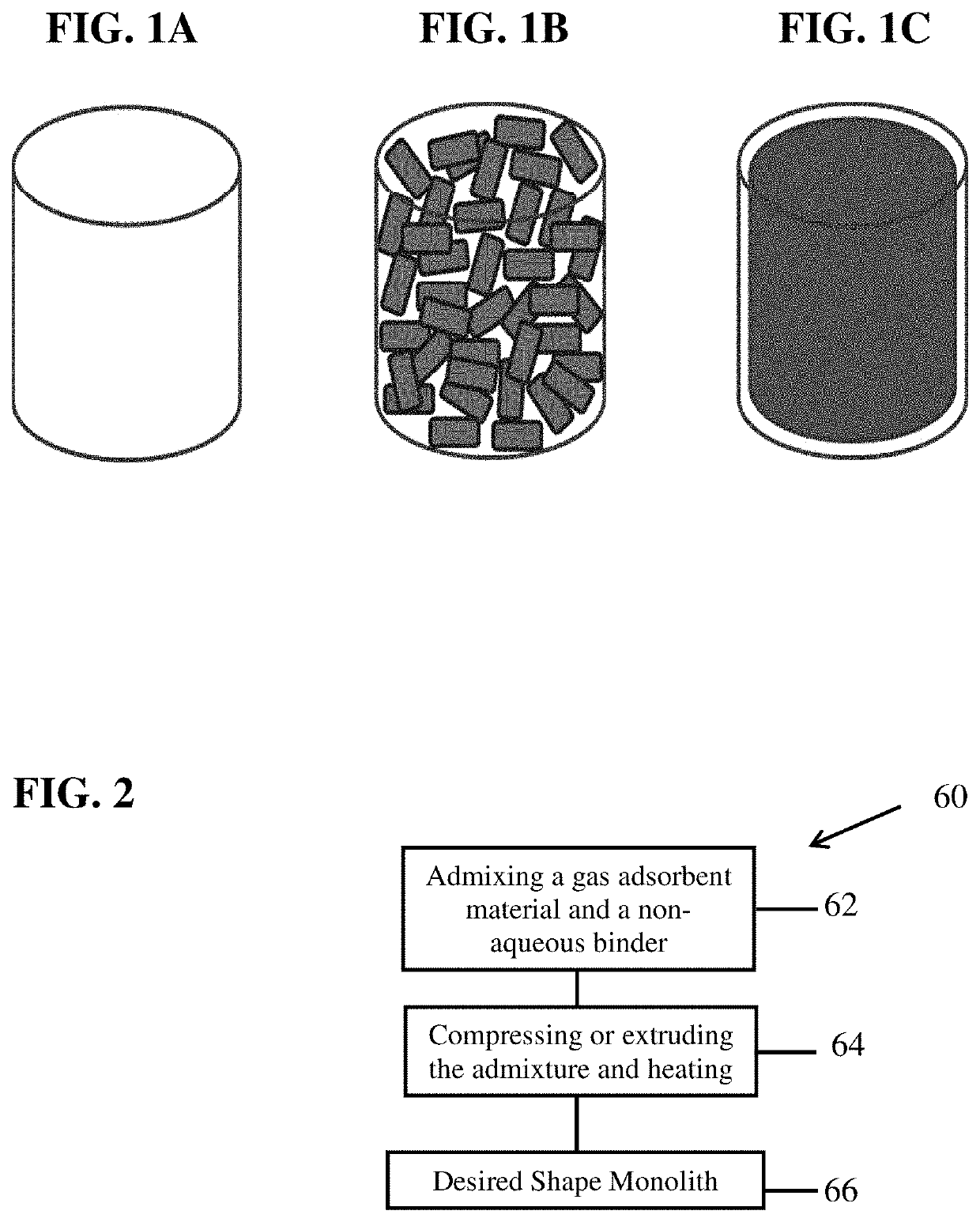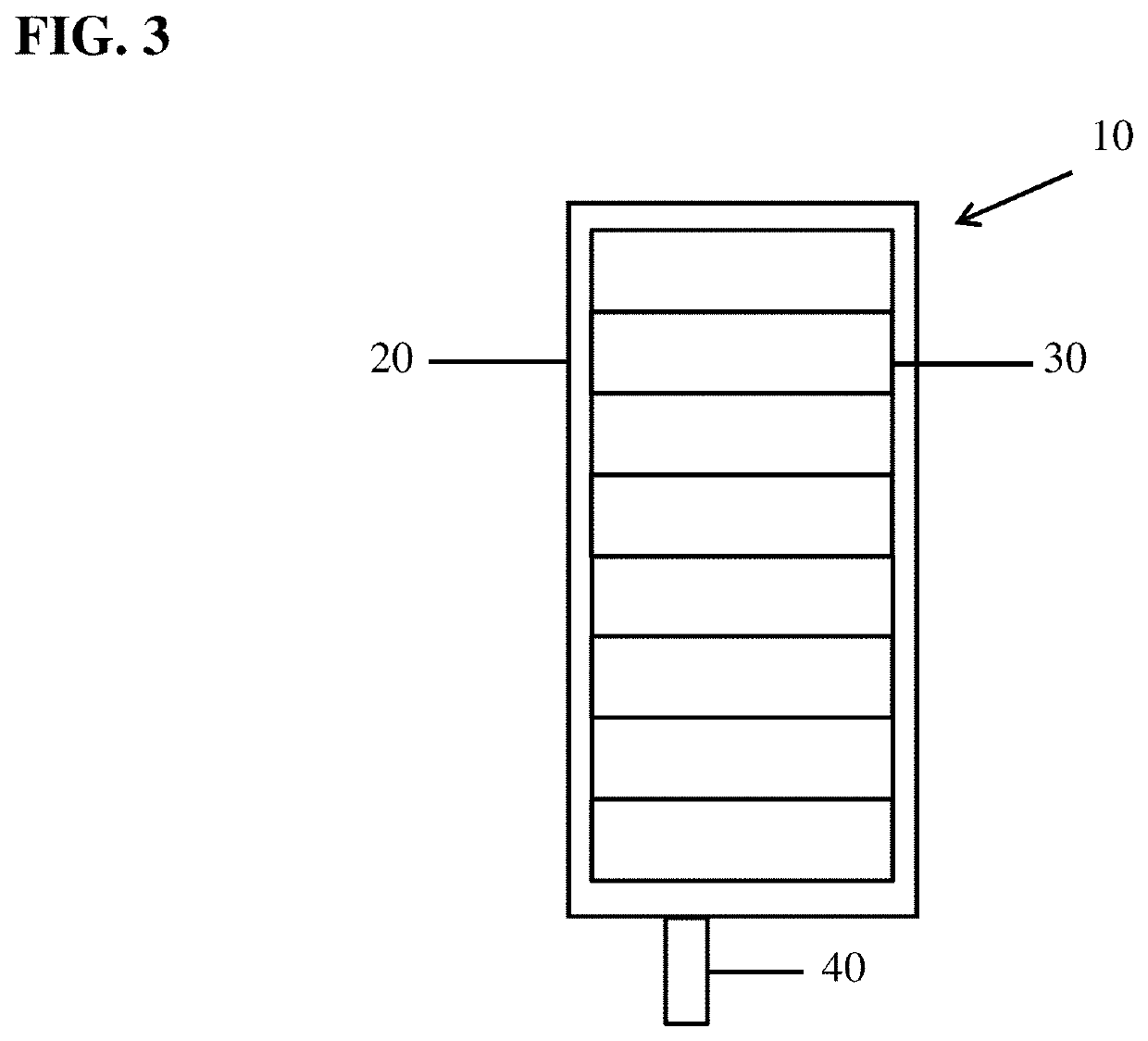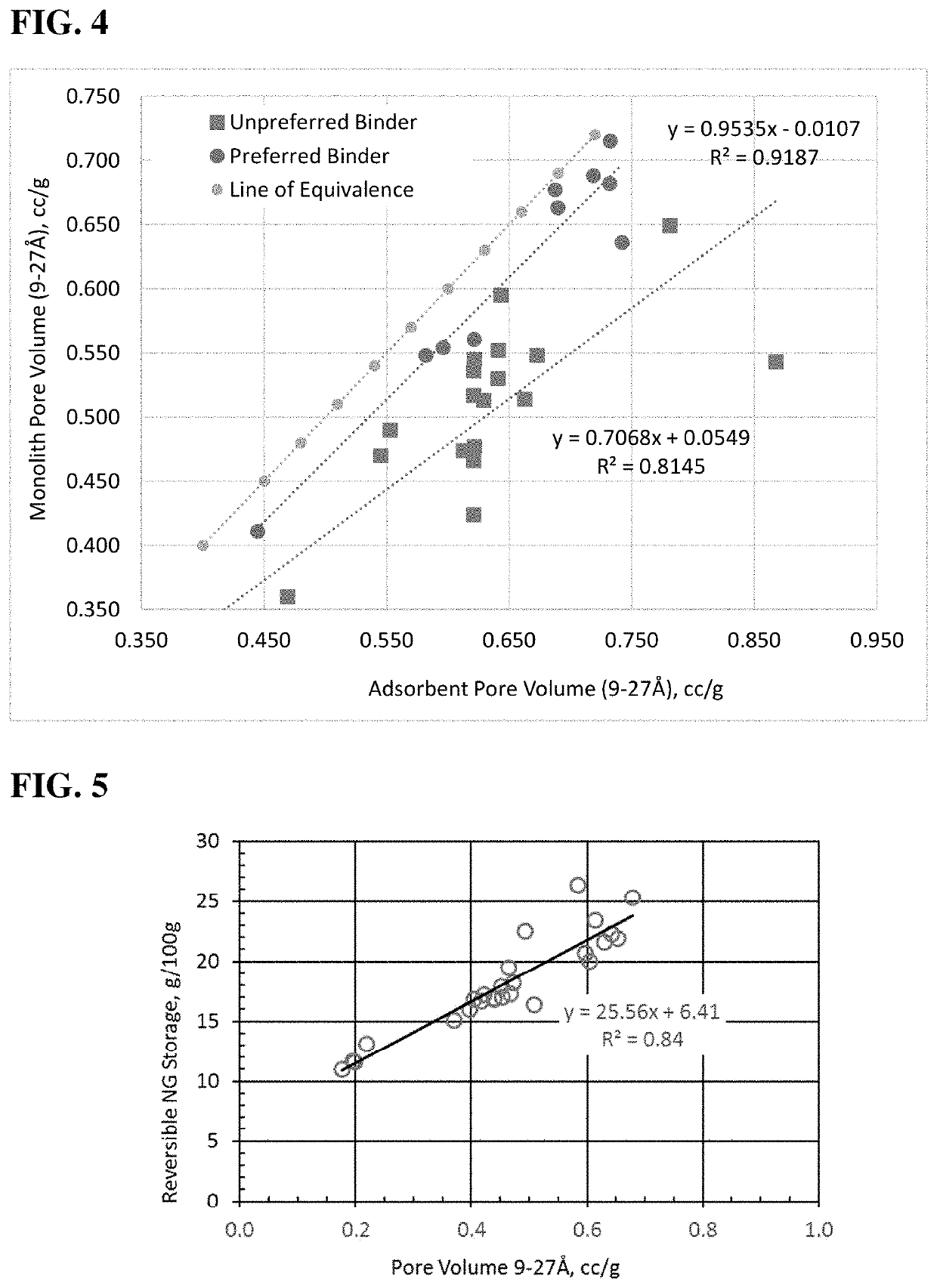Method for enhancing volumetric capacity in gas storage and release systems
a gas storage and volumetric capacity technology, applied in the field of gas storage systems, can solve the problems of high heat release, high cost of using such production methods, complex activation methods and/or exotic materials, etc., and achieve the effect of superior and better predictable dimensions, volumetric capacity and/or gravimetric capacity
- Summary
- Abstract
- Description
- Claims
- Application Information
AI Technical Summary
Benefits of technology
Problems solved by technology
Method used
Image
Examples
example 1
tivated Carbon Bound with CMC
[0110]Alkali activated carbon has been deemed an excellent adsorbent for natural gas due to a significant amount of pore volume in the micropore range (pores <2 nm) and, more importantly determined in the present disclosure, the amount of pore volume in the range of 9-27 Å. Blends were made in a Simpson muller mixer by adding together alkali activated wood-based carbon and CMC at the desired weight ratios (90 wt % carbon to 10 wt % carboxymethyl cellulose (CMC)). The mixer proceeded to mix the ingredients for 5 minutes followed by addition of water at a ratio of water to solids of 1.7:1. Upon water addition, the mixer was continued for an additional 35 minutes. Monoliths were formed from the blend by compression molding in a 4 inch ID cylindrical mold and sufficient material to yield 0.75 inch thickness conducted at 40K psig and room temperature, approximately 70° F. Upon ejection, monoliths were stored at low temperatures (<80° F.) for 48 hours to minim...
example 2
tivated Carbon Bound with PTFE
[0111]Alkali activated wood-based carbon was mixed with a water-diluted 60 wt % PTFE aqueous dispersion to a 50 wt % total moisture blend that was then mixed and sheared in a Simpson pilot muller. The amount of binder was a concentration of 5 wt % PTFE relative to total solids. The mulled blend was dried at 110° C. overnight and then compression molded at 200 psig in a 0.7″ ID mold at room temperature 70° F. This example displayed the best volumetric performance of the compared examples (lowest volume per GGE). In addition, it was observed that a weight percent of 5 is sufficient for forming parts, unlike the CMC or UHMWPE binders which require multiples more binder to maintain part integrity.
example 3
tivated Carbon Bound with Kyblock® FG-81
[0112]Alkali activated carbon was mixed with Kyblock® FG-81 to yield a 10 wt % binder mixture relative to total solids in an Oster blender for 3 minutes. Lesser amounts of this binder in the formulation severely impaired the integrity of the part (data not shown). The mixed powders were added to a 3″ ID preheated mold set to 230° C. The mixture was held for 5 minutes followed by pressing to 7000 psig and maintaining constant pressure for 10 minutes. The sample was then depressurized and released when the mold temperature was <150° C. As shown in Table 2, the alkali activated carbon with Kyblock® monolith performance was very comparable to the performance using the PTFE binder and, with its lower volumetric capacity, superior to the aqueous methyl cellulose binder.
PUM
 Login to View More
Login to View More Abstract
Description
Claims
Application Information
 Login to View More
Login to View More - R&D
- Intellectual Property
- Life Sciences
- Materials
- Tech Scout
- Unparalleled Data Quality
- Higher Quality Content
- 60% Fewer Hallucinations
Browse by: Latest US Patents, China's latest patents, Technical Efficacy Thesaurus, Application Domain, Technology Topic, Popular Technical Reports.
© 2025 PatSnap. All rights reserved.Legal|Privacy policy|Modern Slavery Act Transparency Statement|Sitemap|About US| Contact US: help@patsnap.com



